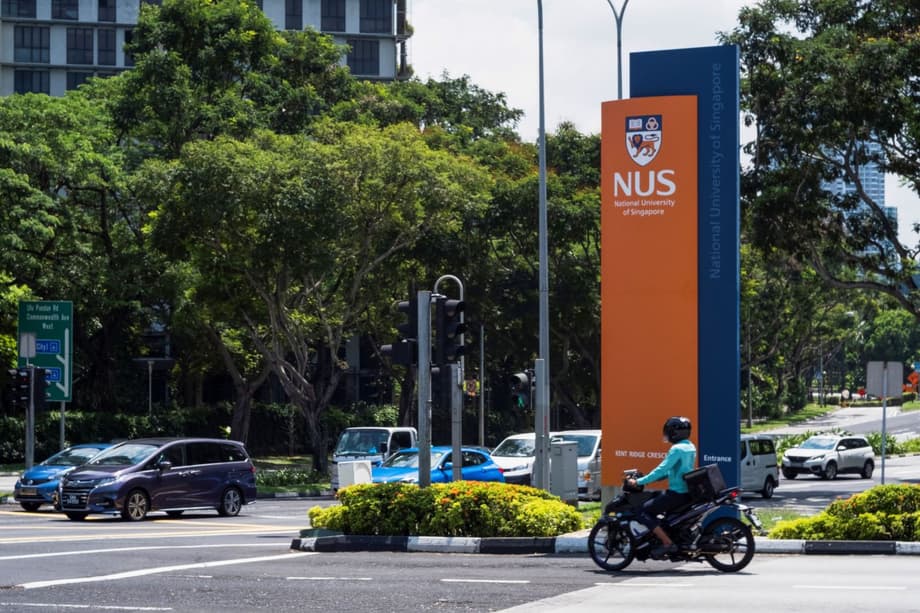A new kind of campus visitor in Asia
On a sunny afternoon at UTown, the green heart of the National University of Singapore (NUS), student guides marshal groups through breezeways and lawns as visitors pose for photos beside libraries and labs. It looks like a typical campus tour, only many of the participants are not applicants or alumni. They are tourists, weaving a university visit into a city break, and they are increasingly coming to Asian campuses.
- A new kind of campus visitor in Asia
- What is driving families to visit campuses?
- Social media turns campuses into destinations
- Benefits and spillovers for universities and cities
- Strains on campus life and how institutions are responding
- Safety, visas and the geopolitics shaping choices
- How to keep campuses open and functioning
- What to Know
For years, travelers have strolled through the quads at Oxford and Cambridge or browsed Harvard Yard and Yale’s college town. That tradition is now traveling east. From Hong Kong to Singapore and Seoul, universities are appearing on holiday itineraries as families fold campus visits into trips across the region.
The shift began to surface in early 2024 when groups from mainland China started arriving at campuses across Asian hubs. The backdrop is a changing map of international study. China remains the largest source of students who go overseas, with more than one million studying abroad in 2023, according to UNESCO. Yet the share heading to the United States has fallen. UNESCO data indicate the number of inbound Chinese students in the US fell by about 20 percent from 2018 to 2023. At the same time, destinations in Asia have gained ground. South Korea, Hong Kong and Malaysia have reported growth in mainland Chinese enrolments of 17 percent, 82 percent and 273 percent respectively since 2018. Singapore, with a large ethnic Chinese community and English as an official language, has become a major draw, and local estimates suggest that nearly half of the city’s international students are from China.
Curiosity about universities is turning into travel. Families want their children to see campuses that feel both ambitious and accessible. For many, a university visit sits somewhere between a museum tour and a rite of passage. The result is a new kind of tourist in Asia’s education cities, one motivated by aspiration as much as sightseeing.
What is driving families to visit campuses?
Several forces are in play. Proximity and cost matter. Flights within Asia are shorter, and families can combine university visits with broader travel. Language and cultural familiarity reduce friction. Parents also weigh safety and political stability when choosing where their children will study and travel. The rapid rise in the global standing of Asian universities, along with stronger industry ties in fields from technology to finance, gives families confidence that degrees earned closer to home can deliver strong outcomes.
Data from a recent blue paper by the Chinese Service Center for Scholarly Exchange, an agency under China’s Ministry of Education, point to a deeper shift. From 2020 to 2023, the share of returnees who had studied in Asia rose from roughly 22 percent to more than 31 percent. The trend is even stronger among doctoral degree holders. In 2023, just over half of Chinese PhD returnees had studied in Asia, while the share from North America declined. For master’s degree returnees, nearly one third had studied in Asia. Families looking ahead see pathways in the region that once seemed possible only in the West.
Gerard Postiglione, an emeritus professor at the University of Hong Kong (HKU), says these trips carry meaning that goes beyond a day out.
For these families, visits to a university with their children is not just a tourist event. It is a cultural event, akin to visiting a museum but also aspirational.
Parents voice similar sentiments at education fairs. At a large exhibition in Beijing this year, one father explained why his son hopes to pursue postgraduate studies at NUS after an undergraduate degree in Australia.
We value the school’s academic quality and job prospects after graduation. We never considered Europe or the US.
Social media turns campuses into destinations
Inspiration does not only come from rankings or brochures. Social media feeds in China overflow with glossy campus scenes. Heritage buildings at HKU, which echo British colonial architecture, circulate widely on Xiaohongshu, a platform that blends travel, lifestyle and short reviews. In Seoul, leafy boulevards and brick facades at Ewha Womans University share screen time with the energy of nearby shopping streets and cafes that anchor Korean youth culture. The draw is as much about the neighborhood and atmosphere as it is about lecture halls.
Jung Jisun, an associate professor at HKU who studies tourism and education, has tracked the trend on the ground and the strains it can cause when it crosses into daily academic life.
Tourists even peek into classrooms to see how university students take their courses.
Research on student travel in Asia suggests why these images matter. Surveys of thousands of university students across the region show that information exposure, especially through social channels, can increase familiarity with destinations, which in turn boosts the intention to visit. The pattern helps explain the rapid rise of campus sightseeing. The more families see familiar places and faces online, the more likely they are to treat a campus as a must see stop.
Educational tourism explained
Educational tourism covers a spectrum of experiences. It ranges from formal study tours and summer programs to informal campus visits that help students imagine themselves in a place. A family might spend an afternoon in a university visitor center, browse a library exhibit, then grab a meal in a student canteen. For children, that makes the idea of university feel tangible. For parents, it turns free time into a learning opportunity. In Asia, where short flights connect cultural and financial hubs, these trips fit neatly into school breaks and long weekends.
Benefits and spillovers for universities and cities
The influx of visitors is not only a curiosity. It can serve a strategic purpose for institutions. Campus tourism helps universities extend their brand well beyond applicants and alumni. A student guide who leads a family through a lab or a performing arts center becomes an ambassador for the institution. The experience plants a seed. Children who have walked a campus and imagined their future there are more likely to apply years later.
There are economic benefits as well. On campus, cafes, bookstores and museums enjoy a steady stream of patrons. Official tours can generate modest revenue, which can be reinvested into visitor services. Off campus, hotels, transit lines and nearby businesses benefit from family travel that includes universities on the itinerary. In cities like Singapore and Hong Kong where tourism and higher education coexist within tight urban footprints, the synergy is immediate, and it reinforces a broader city narrative about knowledge and innovation.
Across the wider region, the appetite for cultural and learning travel is growing. Families from China are booking study themed trips along the historic Silk Road in Central Asia, as new transport links and visa arrangements make multi country itineraries easier. Specialized institutions, such as the Silk Road International University of Tourism and Cultural Heritage, cater to interest in heritage and research. This does not replace campus tourism in East and Southeast Asia, but it shows how educational travel is broadening across the continent.
Strains on campus life and how institutions are responding
A surge in visitors can also disrupt academic routines if it goes unmanaged. University canteens and internal shuttle buses are designed for students and staff. When large tour groups join the lunch rush or pack a bus route, it strains services. Using lecture halls or classrooms as a backdrop for photos can unsettle the learning environment. Universities across the region are now negotiating how to welcome visitors while protecting the core mission of teaching and research.
Some institutions aim for balance. NUS has trained more than 70 student docents to lead guided tours, and it has opened a visitor center to provide context and structure. The program channels visitors toward designated routes and hours and gives them a meaningful experience. It treats a campus visit as an educational moment, not a free for all.
Others have chosen stricter controls. HKU and Nanyang Technological University (NTU) require visitors to pre register, and in some cases to pay a fee to join a guided tour. At HKU, a 90 minute tour costs 140 Hong Kong dollars, which limits last minute crowds and helps the university forecast demand. The approach has reduced congestion and curbed interruptions to classes.
Jung cautions against leaning so far into restriction that universities lose their civic role. She argues that public institutions serve communities, not only enrolled students and staff.
I am concerned about the role of public universities and their relationship with the local community. Public universities are intended to be open spaces for the public, as they are operated with local taxpayers’ money, and people should have access to the campus and feel connected to the university.
Safety, visas and the geopolitics shaping choices
Travel and study choices are also shaped by politics and policy. China’s government has urged citizens to be cautious about travel to the United States amid strained relations. One advisory from the Ministry of Culture and Tourism encouraged travelers to weigh risks before departing.
Assess risks and travel with caution.
Education policy has tightened too. The US State Department has moved to increase scrutiny of Chinese student visas, including steps to revoke visas in certain cases and to expand security checks. University leaders in the US have sought to support students through shifting rules, but the uncertainty feeds into family decisions. For many Chinese students, the combination of safety concerns, visa unpredictability and a hostile political climate is reason to look elsewhere.
Warnings about discrimination in Western countries have been issued before. During the pandemic, Chinese officials advised caution for students heading to Australia, citing incidents targeting people of Asian descent. Even when individual schools remain welcoming, the broader climate can feel less predictable. Families inclined to reduce risk find that top Asian universities, and the cities that host them, offer a mix of quality, safety and cultural familiarity that is hard to ignore.
How to keep campuses open and functioning
Universities can embrace interest without losing their academic focus. Clear visitor policies help. Institutions can set time windows and visitor caps, designate specific walking routes and ask groups to book in advance. Digital passes tied to QR codes at campus entrances reduce friction while allowing security teams to manage flows. Simple signage, multilingual maps and volunteer guides can steer visitors toward areas designed for public access and away from labs and active classrooms.
Student led tours are an asset. Trained docents can interpret history and research for general audiences while modeling student conduct. Universities can establish codes of conduct for visitors, including quiet zones and photography rules. Dedicated spaces for photos, such as a landmark or lookout, can reduce pressure on academic buildings. Simple steps like separating staff shuttle buses from public transit stops at peak hours keep essential services moving.
Data will improve these decisions over time. Universities can track visitor numbers, peak days and popular spots, then adjust routes and staffing. Partnerships with city tourism boards and travel platforms can spread demand across museums, science centers and neighborhood attractions. Hiring and training guides who speak Mandarin or other regional languages can improve the experience and reduce confusion. All of this supports a wider goal, keeping campuses open enough to feel welcoming while protecting the daily rhythm of study and research.
What to Know
- Families from China are adding campus visits at NUS, HKU and Ewha Womans University to their travel plans, turning universities into tourist stops.
- UNESCO data show inbound Chinese students to the United States fell about 20 percent from 2018 to 2023, while enrolments in South Korea, Hong Kong and Malaysia rose.
- A Chinese Ministry of Education affiliated blue paper reports a rising share of returnees with degrees from Asia, including more than half of returning PhDs in 2023.
- Social media platforms like Xiaohongshu popularize Asian campuses, and research indicates information exposure increases familiarity and intention to visit.
- NUS has trained student docents and opened a visitor center, while HKU and NTU require pre registration and, in some cases, charge for tours to control crowds.
- Campus operations have faced strains as visitors fill canteens and buses, and some tourists have tried to enter classrooms during lessons.
- China’s culture and tourism ministry has advised citizens to exercise caution when traveling to the United States, and the US has increased scrutiny of Chinese student visas.
- Universities can balance openness and order with timed entry, guided routes, clear codes of conduct and multilingual signage, preserving the academic environment while welcoming visitors.




